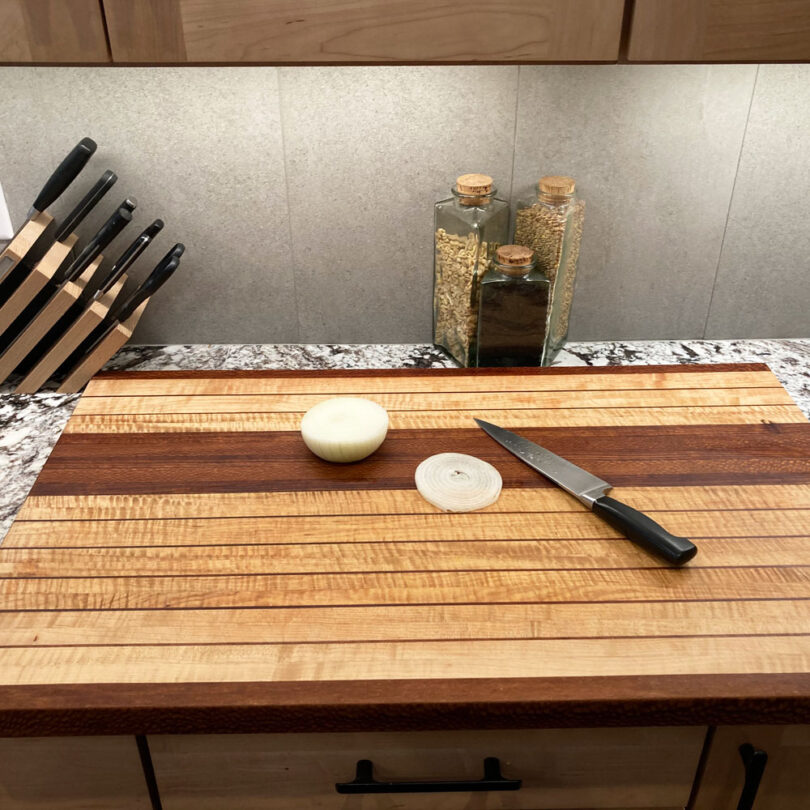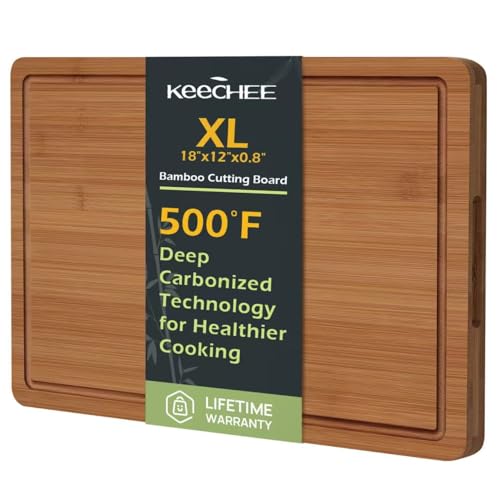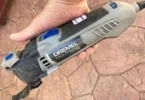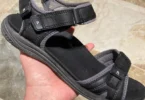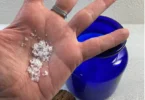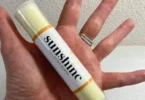For at least 25 or 30 years, I continually have heard “common knowledge” that says that plastic cutting boards are safer for food preparation than wooden cutting boards. However, I know about scientific studies that show the opposite: you are far better off using wood. I wonder why the this urban myth continues to persist and decided to share my own story.
What People Worry About
People are worried that contaminates will soak into a wooden board from poultry or meat, and then will affect other things that are cut on the same board, such as salad ingredients that won’t get cooked. That seems reasonable on the surface (bad pun) but just is not what the results of the research showed.
How I Originally Learned about the Scientific Study
The original research was started at the University of Wisconsin’s Madison Food Research Institute. It was an extremely cold winter night in Minnesota in the early 1990s, I was driving from Minneapolis to the middle of Iowa to see relatives. I turned on National Public Radio to keep my mind awake and active to making the drive safer. I then heard the most fascinating interview that NPR had done with the scientists involved.
They described asking everyone they knew to donate or lend them the oldest, nastiest looking wooden cutting boards they had to use in a study of cutting board safety. They specifically described trying to find people who had done a lot of meat cutting with their boards. They also got some brand new wooden cutting boards in several different types of hardwood. They also tested four different kinds of plastic cutting boards. Then they tested all the boards by placing bacteria on the boards, waiting a bit, then scrapping the spots back off of the boards and growing the results in Petrie dishes.
Results!
99.9% of bacteria placed on wooden boards die after three minutes, while none of the bacteria dies on plastic boards
The scrapped specimens from the plastic cutting boards were super easy to grow. The specimens from the wooden boards didn’t grow any bacteria. WEIRD, right?
So they dug in deeper and found that the wooden boards absorbed the bacterial contamination and decommissioned it somehow. They tried their studies in refrigerated environments and at room temperature. They tried several different types of bacteria including Salmonella, E. Coli, and Listeria. In all cases, the wooden boards outperformed the plastic ones. I think they also tried some boards made of material like marble and glass. In all cases the wooden boards consistently were better.
I was unable to find the original study documentation from the University of Wisconsin source, but I did find an Abstract of the study on the National Institute of Health (NIH) website if you’d like to read the methodology of the study:
Cutting Boards of Plastic and Wood Contaminated Experimentally with Bacteria
Wooden Cutting Board Maintenance
Now this does not mean you should just get a wooden cutting board and not keep it clean! Especially if you are cutting meat or poultry, you should clean the board before cutting something else. Also consider having one board for meats and a separate board for fruit, veggies or anything that you are going to serve without cooking it.
Cutting Board Choices
Marble or Glass Cutting Boards
Marble is a beautiful material, but even a thin piece tends to be heavy. Pastry chefs like to use Marble for rolling out crusts because they help keep the dough chilled while your are working with it. Both Marble and Glass boards are very hard on the edges of your knives and you will have to sharpen them more often than if you use wood. The knife may tend to slide sideways on the hard surface, so you need to take extra care of protecting your fingers.
Metal Cutting Boards
I’m starting to see a lot of ads for “Titanium” cutting boards lately. While the advertising promotes them as safe (from a bacterial point of view), they can be really hard on your knives and cutting into metal will necessitate needing to sharpen your knives more often. Once you cut down to the metal surface, your knife may tend to slide to the side on the metal rather than cutting cleanly into the wood – potentially a safety hazard.
Plastic Cutting Boards
People like the fact that you can just put a plastic cutting board in the dishwasher to clean it. In addition to the safety factor revealed by the scientific study, consider that when you use a plastic cutting board with knives, you are putting tiny bits of plastic into your food. I vote for using a wooden board any day.
In fact, there are starting to be scientific studies available that demonstrate that “Plastic cutting boards are a potentially significant source of microplastics in human food.” Yuck! I’m sticking to wooden cutting boards for anything I cook.
Wooden Cutting Boards
When selecting a wooden cutting board, harder woods will stand up to continuous knife use better than softer woods. Choices like Oak, Walnut and Maple are popular choices, but can be on the more expensive side. Artisan-made boards can contain more exotic hardwoods, and are often so beautiful that you’ll want to keep the board out on your counter instead of storing them in a cupboard between uses.
Bamboo cutting boards are softer, but can last for years. They have the advantage of being less expensive, and Bamboo is normally considered a sustainable material.
In recent years, there have been many more cutting boards available made from Acacia. This wood is relatively hard, yet is a faster growing material than walnut or oak, so the price is more moderate.
This Bamboo cutting board is available in two colors (I like the darker 'carbonized' color) and is rather spacious at 18 x 12 x 3/4 inch (dimensions approximate). It has grooves cut in the narrow ends to make it easier to lift from the counter. One side has a juice groove and the other has cutouts to allow the board to be a serving tray for cheese, veggies or other appetizers.
This wooden cutting board is made from Acacia - both beautiful and functional. This larger sized board measures 20 x 15 x 1.5 inches and has a groove all the way around one side to keep meat juices from dripping on your counter.
My Wooden Cutting Board
I like cutting up a bunch of veggies at once, without having to transfer them to bowls, so the huge cutting board shown in the featured image is my favorite one. I had it custom made by an artisan in Iowa. Not only is it large and thick, but it has a lip on the front edge so that it doesn’t slide around on the counter when I am cutting.
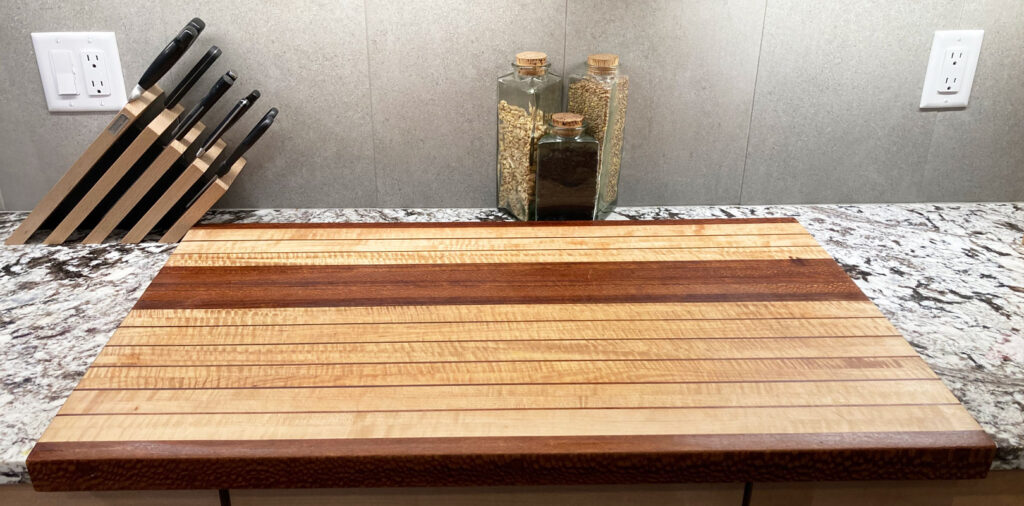
I also really like Bamboo cutting boards, and I use one for cutting fruits. That way, the fruit slices don’t pick up flavors (like onion and garlic) from my main cutting board.
In case you noticed the awesome knife block on my counter, I will include a link so that you can have one too! Instead of having the typical thin slots, this knife block is magnetic and super easy to use.
A work of art to hold your knives! My block is the 10 knife variety but they have other sizes and a few other color choices.
Cutting Board Conditioners & Block Oil
Incidentally, the U. of Wisconsin study also looked at cutting board block conditioners made from mineral oil, and found that using oil or not using it made no difference to the bacteria fighting abilities of the wood. So go ahead and condition your wooden boards to avoid drying out and cracking. In the very dry Colorado climate, I use a Cutting Board Conditioner to keep my board from drying out and cracking.
I've been using this Howard's Cutting Board Oil and Howard's Butcher Block Conditioner for many years, and you can see from my pictures how good my wooden cutting board looks (about 10 years old at this point). The products are food safe and your cutting board will love them!
Wooden Cutting Boards at Thrift Prices
Check out this thrift source for a wooden cutting board in Thrift Store Junkie: Explore Glenwood Colorado.
Table of Contents
If you enjoy kitchen related topics, one article that might be of interest is Cast Iron Skillet – A Must-Have for your Kitchen.
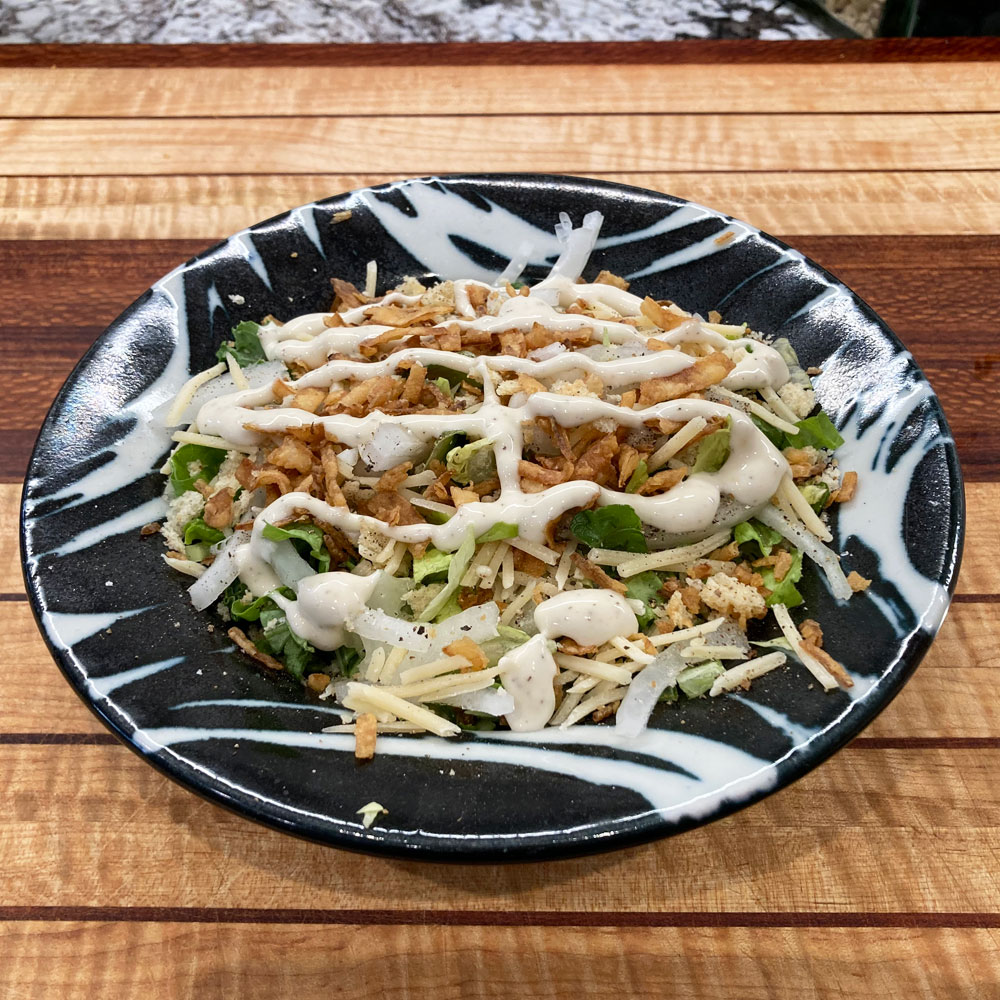
This is the most recent salad I made on my cutting board. The slice of onion you see in the featured image is in here 😉
I’ve been eating this salad while I wrote this post. I hope you enjoyed the Post as much as I enjoyed the salad.


